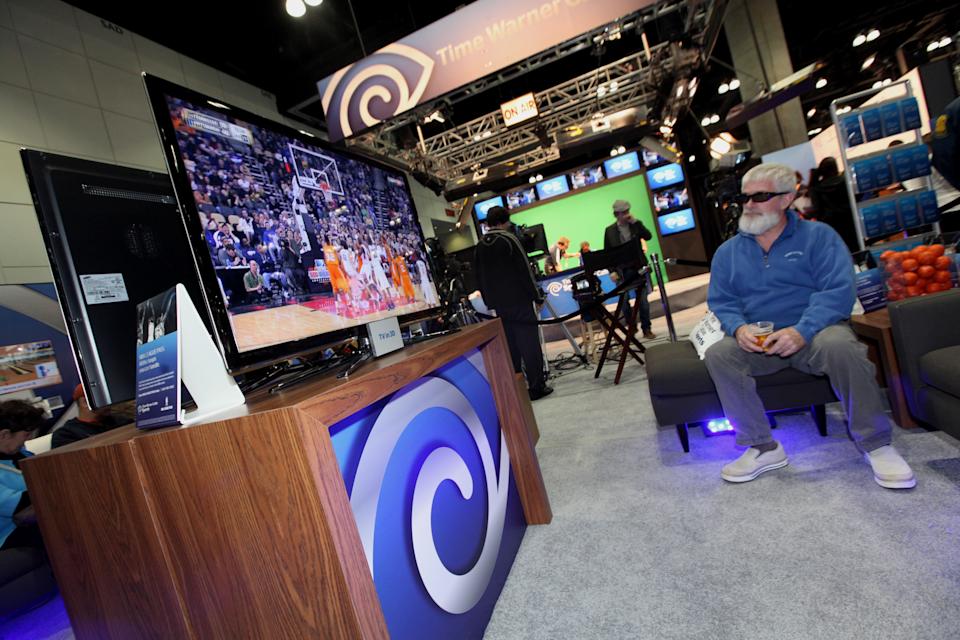You might soon have to choose between local channels and cheaper TV prices

DENVER—The pain isn’t letting up for pay TV as we’ve known it. But the flight of subscribers from fee-soaked cable and satellite bundles—a record-breaking 1.4 million in 2019’s first quarter, per MoffettNathanson—doesn’t mean streaming TV services will provide a seamless replacement free of rate hikes.
Instead, streaming services like Hulu Live TV, YouTube TV, and PlayStation Vue face the same escalating expenses for local broadcast and sports networks as their cable-based counterparts, industry executives and analysts noted at the Pay TV Show conference here.
And that means consumers may one day have to choose between paying more for their live TV, or ditching sports and local channels all together.
Signing off of sports
The eroding value of regional sports networks (RSNs) became headline material a week ahead of the conference here when Sinclair (SBGI) bought 21 former Fox (FOX) RSNs from Disney (DIS) for $10 billion. Analysts had expected them to fetch $15 billion to $25 billion.
Sports franchises originally launched these networks planning to charge aggressively for seemingly must-watch content (for example, the Los Angeles Dodgers' SportsNet LA). But many traditional and streaming operators now balk at those costs.
“RSNs evolved at a time when sports rights bidding was on the upswing,” Parks Associates analyst Brett Sappington said during a panel Wednesday. “It's a different time now.”
“They are probably the worst deal on television,” Sling TV executive vice president Warren Schlichting said Tuesday. “I don't think that's sustainable.”
Teams could sell video subscriptions directly to fans—as Washington’s D.C. United soccer franchise now does—but that raises other scalability issues.
“The problem with moving outside of the big bundle to go directly to consumers or in a smaller package is it reduces the ability to spread costs across a big base,” explained Ian Olgeirson, a research director with the Kagan group of S&P Global Intelligence (SPGI).
In other words, you may have to choose between paying for many more channels than you care to watch or paying for a separate bill.
Paying a local tax
The escalating retransmission fees local stations charge TV operators for their content—under pain of broadcast networks yanking locals off cable or satellite—also drew numerous complaints.
“Nothing goes up that fast,” Schlichting complained during his Tuesday talk.
But viewers with antennas and sufficiently good reception can watch their local stations for free. That’s led newer streaming-media players like the Amazon (AMZN) Fire TV Recast and Sling’s AirTV to include digital-TV tuners.
For those out of range for easy reception, Locast.org rebroadcasts local stations online in nine U.S. cities, and seems protected by its non-profit status from the suits that doomed startup Aereo.
The upcoming “ATSC 3.0” broadcast standard has mainly been touted as delivering 4K Ultra High Definition over the air to compatible sets—none have shipped in the U.S. yet—but it should also improve mere HDTV reception on those future televisions.
Which should definitely rank as a reason to hold off on buying a new set.
Opting out
Sling, the largest online pay-TV service, has been content to let competitors chase sports and local broadcasters. The Dish Network (DISH) subsidiary omits most sports networks from its starter $25 bundle and carries only a subset of broadcast channels.
A newer streaming-TV service, Philo, doesn’t even include ESPN or local stations, and so can charge just $20 for its 58-channel bundle.
“The annual increases in the programming for the sports and broadcast networks are really extreme,” Philo CEO Andrew McCollum said in an interview Wednesday.
Some smaller cable operators now find pay TV to be untenable, thanks to their lack of negotiating leverage with networks. In a panel I led Tuesday, Wolfe Research managing director Marci Ryvicker said smaller operators can pay $15 more per subscriber for content than Comcast (CMCSA).
“The margins are nonexistent for many of our members,” said Judy Meyka, executive vice president of programming at the National Cable Television Cooperative, during a Tuesday discussion. One result: On Wednesday, the regional cable provider WideOpenWest (WOW) said it would market Philo to its broadband subscribers.
Platform possibilities
Meanwhile, so-called linear, live-TV services—Sling, AT&T’s (T) DirecTV Now, Google’s (GOOG, GOOGL) YouTube TV, the now-Disney-controlled Hulu with Live TV, and Sony’s PlayStation Vue—remains a minority of our online-streaming screen time.
Comscore (SCOR) analyst Susan Engleson shared research showing that Amazon, Hulu, Netflix (NFLX), and YouTube accounted for 78.8% of time spent streaming. That total includes the live-TV services of the last two, but their total U.S. audiences (25 million at Hulu, a Comscore-estimated 230 million at YouTube) far outstrip live-TV subscriptions that Bloomberg reported in March combined for about 3 million.
Ryvicker, Engleson and TDG Research’s Michael Greeson said that linear TV services' growth has stalled, thanks in part to their recent price hikes.
Combine that with upcoming debuts of video services from Disney, Apple (AAPL) and NBC (the last being a defensive if not delusional attempt to keep viewers on traditional cable and satellite), and the future of TV could involve a lot of flipping between apps. Channel-store platforms like those of Apple, Amazon and Roku (ROKU) can offer a simpler experience—but not if they miss popular sources.
As Amazon Fire TV general manager Jennifer Prenner summed up in a panel Tuesday: “It's the golden age of content, but it's also the golden age of being unable to discover your favorite content.”
(Disclosure: In return for my moderating that Tuesday panel, the conference organizers are covering my travel costs.)
Email Rob at rob@robpegoraro.com; follow him on Twitter at @robpegoraro.

